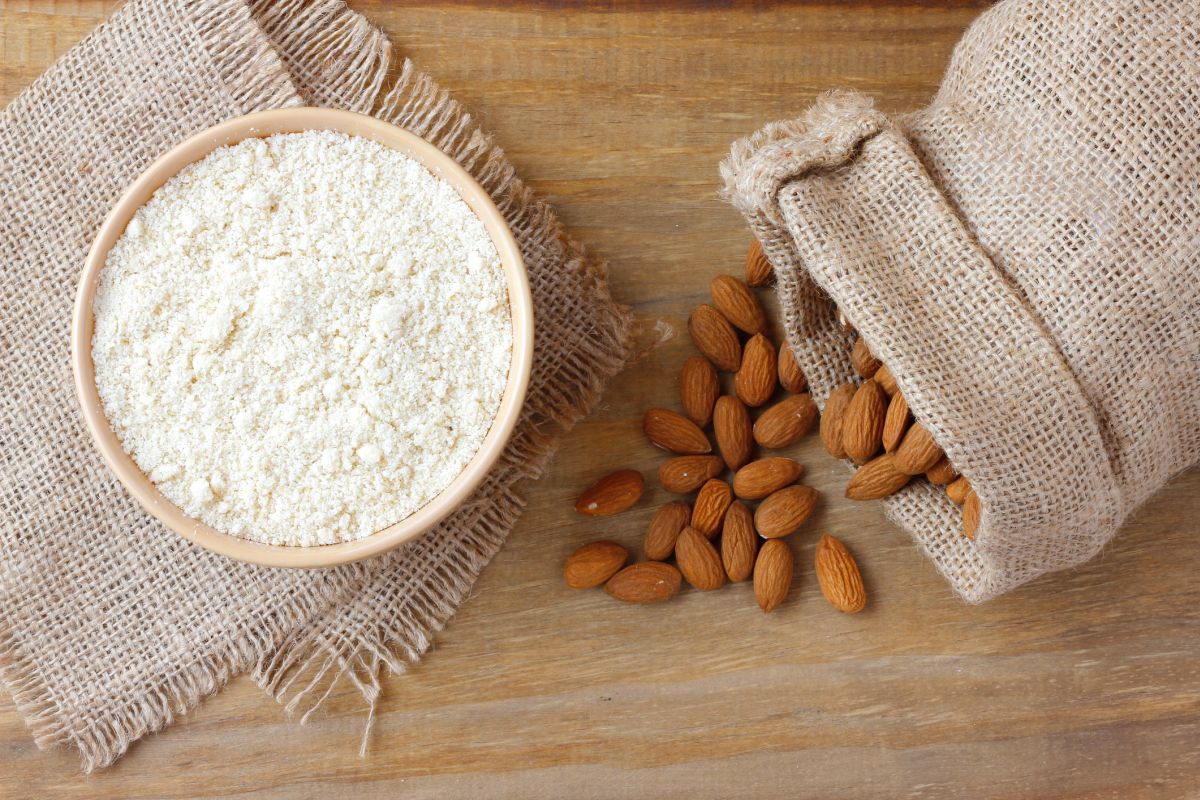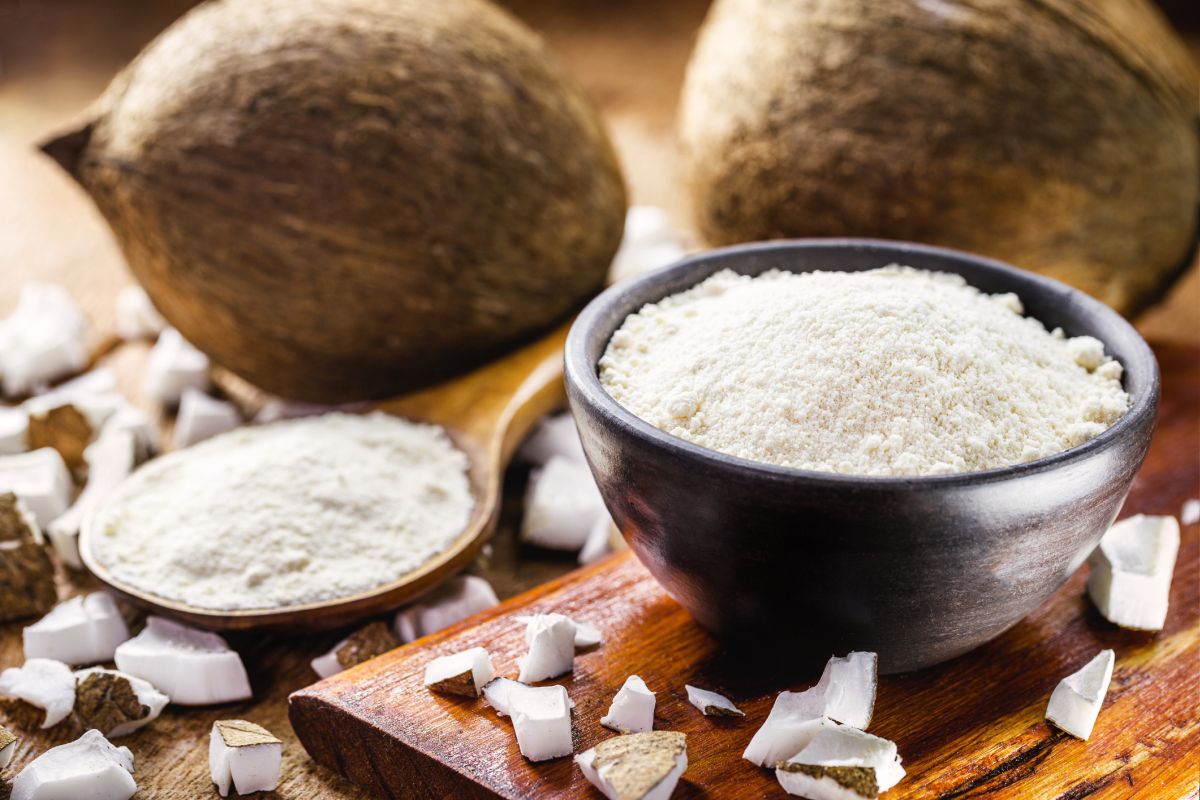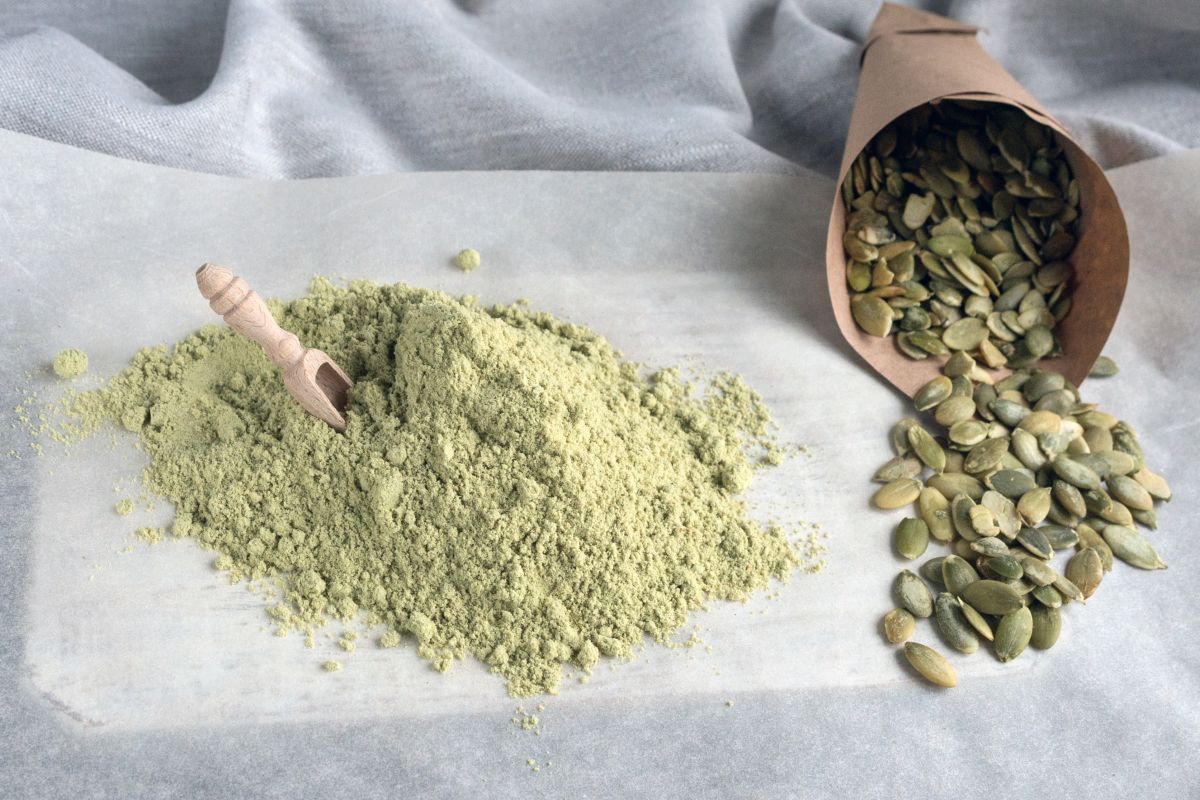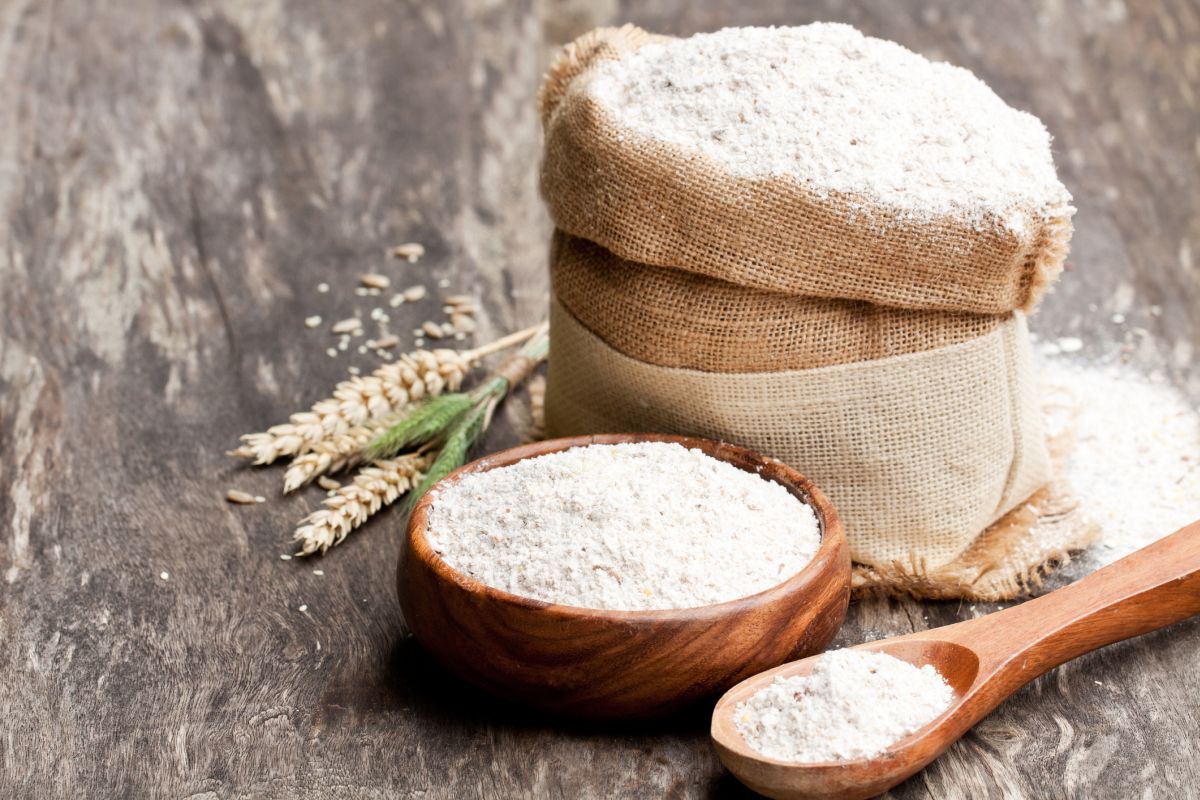If you need an almond flour substitute due to allergies, dietary choices, or simply because you’ve run out, there are some great alternatives for you to use in your recipes.

What Is Almond Flour?
Almond flour, or almond meal, is made by grinding sweet almonds into a fine powder to replace wheat flour in daily cooking and baking applications. Its texture resembles a corn meal and is a gluten-free alternative.
Varieties of Almond Flour
- Almond Flour – made from almonds that have been blanched to remove the skin. The results are a lighter flour to use in normal baking and cooking applications.
- Almond Meal – made from almonds that have not been blanched and are darker in color and heavier in weight. This type of almond flour can be used in baking and cooking applications, but it is not suitable when you require lightweight flour since it will weigh down your recipe.
Common Uses for Almond Flour
- Baking – works well in baking applications, such as cookies, pie crusts, and muffins.
- Gravy base – can be used to make a basic gravy base.
- Coating – makes for a tasty crumb coating for meats and veggies.
- Thickener – can be used to thicken sauces, soups, and stews.
- Smoothies – can be added to smoothies will add some nutritional value.
- Almond milk – can be used to make almond milk instead of using whole almonds.
Difference Between Almond Flour and Coconut Flour
The difference between almond flour and coconut flour is moisture. Coconut flour absorbs more moisture which might result in dry or crumbly baked goods. On the other hand, flour that is made from ground almonds is moister than coconut flour. So, it is denser and might cause your baked goods not to rise properly. Almond flour also has more carbohydrates and fat than coconut flour.
Reasons You Should Avoid Using Coconut Flour as a Substitute for Almond Flour
- Your baked goods may be too dry or crumbly if you don’t adjust the moisture in the recipe.
- There is a noticeable taste difference, which might be offputting to some.
15 Best Almond Flour Substitute Options
1. Coconut Flour
Coconut flour is a great substitute for almond flour if you are able to easily adjust the moisture content in your recipe and won’t mind a noticeable coconut flavor. Sugar-Free Londoner uses coconut flour to make pancakes.
2. Almond Meal
Almond meal is slightly different from flour made from ground almonds, but they can be used to replace each other in most recipes where the weight of the flour is not an issue. Healthline notes that the only nutritional difference between the two is a slight difference in fiber content.
3. Pecan Flour
Pecan flour is great to use in baking since it binds very well and has a rich taste. It also works very well as a thickener in sauces. Fisher Nuts has a great recipe for waffles using pecan flour.
4. Cashew Flour
Cashew flour has a milder flavor compared to other nut flours and is ideal to use in both savory and sweet dishes. Amazing Paleo created a recipe for turkey meatloaf using cashew flour.
5. Macadamia Flour
Macadamia flour is slightly sweeter than flour made from ground almonds and has a pronounced nutty flavor. It can be replaced in a 1:1 ratio for almond flour. Healthline gives you a basic overview of macadamia nuts’ health benefits.
6. Hazelnut Flour
Hazelnut flour is great to use in recipes where you’d like a coarser texture and where you don’t need it to bind, as well as flour made from almonds would. Masterclass explains how to use the ingredient and how to make it.
7. Homemade Almond Flour
If you can’t find almond flour, but you have 5 minutes and a high-powered blender, you can make your own at home following Minimalist Baker’s instructions. Blanched almonds make for the best flour made from grinding almonds.
8. Sunflower Seed Flour
Often called sun flour, sunflower seed flour is a great nut-free alternative to flour made from almonds and still remains gluten-free. It might be difficult to come by in stores, so follow My Quiet Kitchen’s recipe for making your own.
9. Pumpkin Seed Flour
Pumpkin seeds can be found in health food stores or online and make for a great alternative to almond flour since it still has a nutty taste without any nuts. The Toasted Pine Nut uses pumpkin seed flour in its focaccia recipe.
10. Flaxseed Flour
Flaxseeds are often added to recipes for its health benefits. In fact, using flaxseed flour is a good option to replace almond flour, as it has excellent binding properties and is gluten- and nut-free. Nutrition Refined uses flaxseed flour in their recipe and shows you how to make your own if you can only find whole flaxseeds.
11. Plantain Flour
If you need to use gluten-, nut- and seed-free flour, plantain flour might be your best option. It can replace almond flour in a 1:1 ratio. That Girl Cooks Healthy shows you how to make your own plantain flour.
12. Cassava Flour
Cassava flour is made from the cassava root. It behaves like wheat- and almond flours in most recipes. It has a slightly earthy taste but is good to use in both sweet and savory recipes. Medical News Today has a complete overview of the use, benefits, and nutritional value of cassava flour.
13. Oat Flour
Oats is a gluten- and nut-free flour. This type of flour can be used in recipes that call for flour made from almonds. Adjust your egg or binding ingredients when using oat flour in recipes. Minimalist Baker shows you how to make your own oat flour in 5 minutes.
14. All Purpose Flour
If you have no allergies to wheat and gluten, an easy and inexpensive alternative to almond flour is normal all purpose flour. Masterclass compares both flours and how to use them.
15. Wheat Flour
Similar to all purpose flour, you can use wheat flour as a replacement for flour made from ground almonds, if you have no gluten sensitivities. Spoon University compares almond- and wheat flour.
Tips for Almond Flour Substitution
- Binding – most nut and seed flours have great binding properties. However, if you are using a nut-and-seed-free alternative, adjust the eggs or binding ingredients in your recipe, especially when making baked goods.
- Rising qualities – flour made from almonds is a heavier type of flour and so are most of the alternatives. Therefore, make sure you experiment with each alternative to see how they do when making recipes where you need the dough or batter to rise.
- Yeast – if you are using a recipe where you use yeast, it will not activate as well with high-fat or high-protein flour since it needs carbohydrates to activate and ensure your dough rises.



Leave a Reply